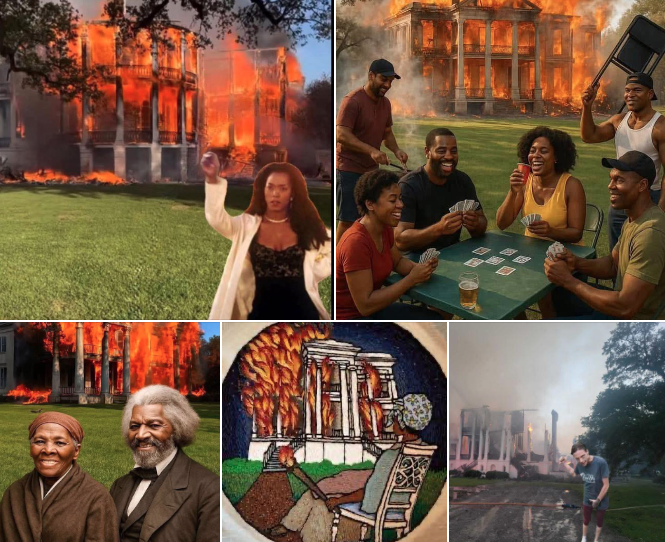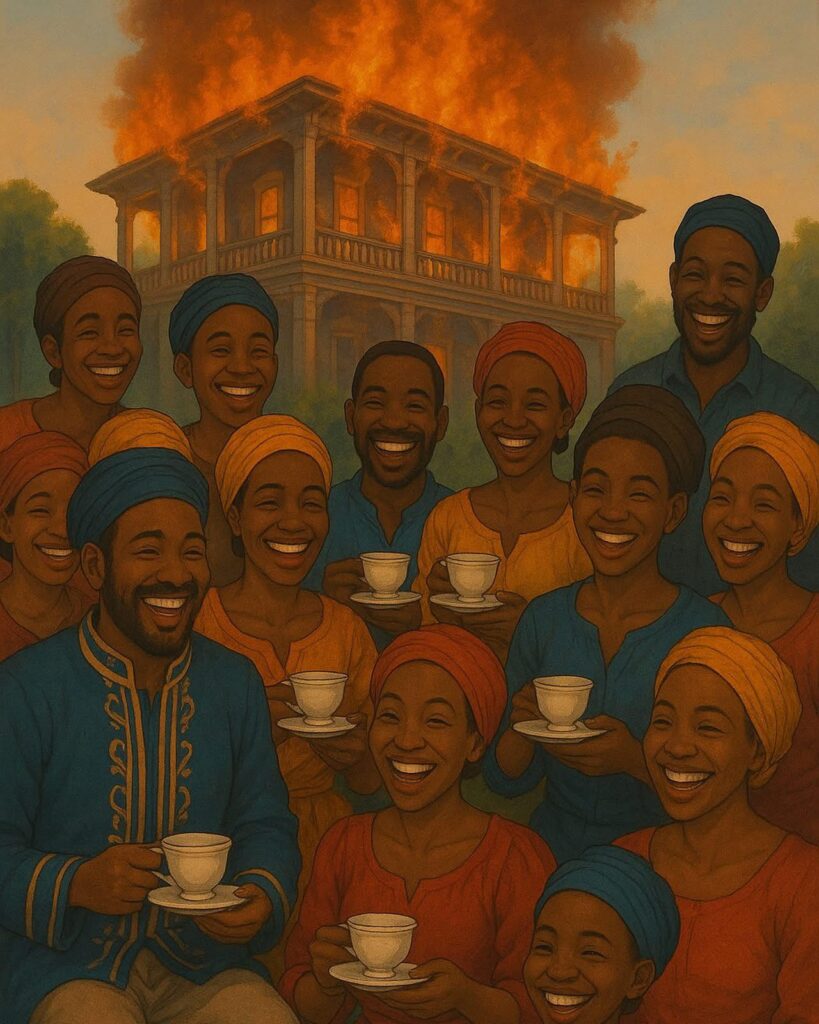🔥 Gone with the Flames: When Nottoway Plantation Burned Down Digitally and Emotionally (With Love from Underground) 🔥
When I saw the headline—“Nottoway Plantation Burns to the Ground”—I did a double-take. Not because I was shocked it happened, but because the poetic symbolism was so loud it could’ve been written by Jordan Peele’s ghostwriter.

On one hand: it’s funny. Like, divine-comedy-with-a-side-of-justice funny.
On the other hand: it’s sad. Not because the building’s gone, but because of what it once represented—and what it could have been if America ever got honest about its history.
But then it hit me: this whole situation feels like a deleted scene from Underground. Yes, the tragically short-lived, soul-searing, genius TV show that dared to turn America’s greatest sin into a full-blown action drama with heart, grit, and gasoline.
Let’s talk about the digital sadness and meme-worthy absurdity of a plantation catching fire—while reflecting on how Underground already taught us everything we needed to know about the truth behind the flames.
💻 The Internet’s Reaction: Between Cackling and Crying
Social media did what it does best: laugh through the trauma.
- “Looks like the ancestors had enough.”
- “They said stop romanticizing plantations and meant it.”
- “Rosalee, is that you with a match and a plan?”
It was darkly hilarious how fast the jokes flew. But beneath the humor was something deeper: catharsis. Because digitally, Nottoway wasn’t just a physical space—it was an icon of the American habit of aestheticizing brutality.
It was Instagram-ready with its white columns and manicured lawns, but try finding a tour brochure that honestly mentioned the 155 enslaved people who built, cleaned, and died on that property.
That’s what makes the humor bittersweet. Funny that it burned. Sad that so many people only learned about it after it was reduced to ashes.
📺 Scene from Underground: “This Ain’t Gone with the Wind, Baby.”
Remember when Noah stands bloodied and bruised, still refusing to give up his fight for freedom? Or when Rosalee, in a corset soaked with sweat and determination, outsmarts every hunter, slaver, and trap in her path?
That kind of truth doesn’t live in the wallpaper of a plantation mansion. It lives in the people who tried to escape it.
In Underground, the mansion wasn’t the point. It was the prison. The horror behind the whitewashed façade. Watching Nottoway burn almost felt like the universe was shouting, “Set design complete—now focus on the real story.”
😢 The Digital Sadness: Screensavers and Smoke
Now that it’s gone, Nottoway mostly exists online: in wedding photos with suspiciously cropped backgrounds, Pinterest boards titled “Plantation Elegance,” and TikToks that play sad violins over burned rubble.
And that’s where the sadness creeps in. Because we don’t just erase history by fire—we erase it when we edit it to make it more palatable. When we choose aesthetics over accountability. Nottoway, for decades, was sold as “historic charm,” when it really should’ve come with a trigger warning and a reading list.
Underground never made that mistake. Every scene was steeped in the tension of what it meant to be Black, enslaved, brilliant, and dangerous. That show didn’t let anyone off the hook—not the viewers, not the characters, not even the system that tried to contain them.
🔥 Nottoway’s Final Season
In the end, maybe the burning of Nottoway was the final act of a long-overdue narrative shift. The grand finale no one asked for but secretly needed.
The fire didn’t just take down wood and plaster. It burned through denial, through nostalgia, through every “but my great-great-grandpappy lived there!” excuse not to tell the truth.
And just like in Underground, where fire was often a metaphor for rebellion, rage, and redemption—this fire feels like a message: You can’t preserve a lie forever. Eventually, something’s going to catch.

